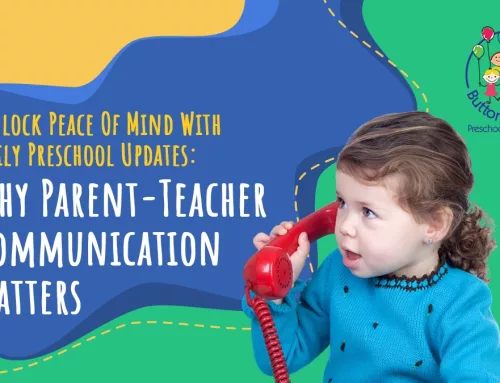Choosing half-day vs. full-day preschool in Holladay, UT, is a meaningful decision that shapes your child’s routine, learning pace, and family’s daily rhythm. This expert guide explains how each schedule supports social skills, self-help habits, and early academics while honoring attention spans and energy levels.
You will learn what to expect from class structure, transitions, nap and meal times, and teacher-led activities. We also outline practical factors such as pickup windows, budget planning, and availability across the school year. With a clear comparison, you can match program hours to your child’s readiness and your work schedule, creating a confident start in preschool.
Preschool Flexible Hours in Utah: What Families Can Expect
Families in Utah often balance preschool choices with work hours, commute times, and a child’s stamina. Flexible scheduling helps align care with real-life routines while preserving a predictable classroom rhythm. Here’s how these options typically work and what to ask before enrolling.
How Flexible Schedules Are Structured
Most programs combine set instructional blocks with selectable start and end windows. You’ll see half-day, partial-week, or full-day options with supervised arrival and pickup.
- Half-Day AM or PM: Short, focused blocks that center on circle time, learning centers, outdoor play, and snack.
- Partial-Week Patterns: Two, three, or five consistent days that provide regularity without a daily commitment.
- Full Day With Windows: Core learning hours plus clearly defined early drop-off and later pickup times.
- Hybrid or Transition Plans: Increasing hours gradually to build stamina for longer days.
These formats aim to respect attention spans and support family logistics while keeping classrooms stable and calm.
Daily Rhythm and Classroom Consistency
Even with flexible hours, classrooms follow predictable routines to support learning and self-regulation. Expect clear structure and communication across the day.
- Anchored Routines: Morning meetings, center rotations, outdoor time, meals or snacks, and closing activities occur steadily.
- Stable Peer Groups: Children remain with the same classmates and teachers to build relationships and continuity.
- Teacher Communication: Daily notes or app updates outline activities, meals, rest, and goals.
- Secure Handoffs: Clear sign-in/out processes and staff oversight at arrival and dismissal.
This blend of flexibility and structure helps children anticipate what comes next and feel confident.
Enrollment, Availability, and Smart Questions
High-demand time blocks—especially morning half-day and later full-day pickups—often fill first. Before you decide, ask about waitlists, mid-year changes, and summer options.
- Arrival and Pickup Windows: Confirm exact time ranges and late-pickup policies.
- Rest and Nap Policies: Learn how rest is handled for older preschoolers.
- Switching Schedules: Check whether you can move from half-day to full-day if needs change.
- Closures and Missed Days: Understand holiday schedules and weather procedures.
- Progress Updates: Clarify how learning goals and daily progress are shared.
Clear answers to these details ensure your chosen schedule fits your child’s needs and your family’s calendar.
Full Day Preschool Benefits in Holladay: Who Thrives and Why
Families often weigh the benefits of full-day preschool in Holladay to match a child’s learning pace with a steady daily rhythm. A longer day provides time for deeper projects, peer collaboration, and well-timed rest. The result is a predictable structure that supports growth and confidence.
Extended Learning and Consistent Routines
Full-day programs allow for unhurried learning. Children revisit ideas, practice skills, and see projects through multiple stages. The day also accommodates nutritious meals and restorative rest.
- Longer Project Time: Children engage in multi-step activities, returning later to extend thinking and problem-solving.
- Integrated Enrichment: Music, movement, and outdoor exploration fit naturally without compressing core literacy and math.
- Predictable Rhythm: Transitions occur steadily, helping children regulate emotions and attention.
- Healthy Mealtimes and Rest: Lunch and quiet time are built in, supporting energy, mood, and readiness to learn.
Teachers can individualize instruction with ample time while maintaining a calm, organized flow.
Who Thrives in Full-Day Programs
The fuller schedule is particularly valuable to specific learners and families. When deciding on fit, consider the following profiles.
- Children Who Like Structure: Learners who prefer clear routines and expectations benefit from stable, repeated patterns.
- Curious, Task-Oriented Learners: Children who persist at centers or projects gain from extended blocks of exploration.
- Kindergarten-Bound Preschoolers: Longer days mirror upcoming school routines, easing academic and social transitions.
- Working Families: Aligned hours reduce midday handoffs and simplify coordination with sibling schedules.
A full day can reinforce independence, cooperation, and stamina when these needs are present.
Practical Advantages for Holladay Families
Local schedules and commutes often favor a single, continuous care block. Full-day options minimize mid-shift pickups and provide steady peer groups.
- Fewer Daily Transitions: One drop-off and pickup lowers stress and supports consistent behavior.
- Aligned Workday Coverage: Core hours, plus defined arrival and dismissal windows, match typical office schedules.
- Deeper Teacher Insight: More time together yields detailed observations and timely updates to families.
- Stable Peer Relationships: Extended play and learning nurture friendships and social language.
These practical strengths and instructional depth make full-day care a strong option for many Holladay households.
Part-Time Preschool Schedule in Utah: Options and Tradeoffs
A part-time preschool schedule in Utah offers structured learning with shorter daily commitments, aligning care with naps, commutes, and family routines. Many families prefer AM or PM sessions or weekly days to balance social growth with home time. Here’s how these formats work and what to consider.
Formats That Fit Family Routines
Part-time models vary by hours and weekly frequency, yet all keep classroom rhythms predictable. Expect clear start/finish windows and consistent peer groups.
- AM or PM Half-Day Blocks: Three to four hours focused on circle time, centers, outdoor play, and snack.
- Two, Three, or Five Days: Fixed weekly patterns that ensure repetition without a daily commitment.
- Staggered Arrival Options: Defined windows that ease traffic at drop-off while preserving morning routines.
- Hybrid Ramp-Up: Gradually adding days or hours to build stamina before a future full-day move.
These options allow families to match care to energy levels while maintaining continuity in the classroom.
Who Thrives on Part-Time
Part-time schedules often suit children and households seeking a balance between school and home. The shorter blocks can support regulation and predictable transitions.
- Younger Preschoolers: Children still consolidating naps and self-regulation benefit from shorter academic and social stretches.
- Therapy or Activity Schedules: Families coordinating speech, OT, or swim lessons can preserve weekday openings.
- At-Home Caregivers: Households with flexible coverage may prefer targeted school hours for peer interaction.
- Gradual Separation Needs: Children who adjust slowly can practice goodbyes without midafternoon fatigue.
When these profiles resonate, part-time can deliver learning gains without overwhelming the day.
Tradeoffs, Logistics, and Questions To Ask
Part-time care can create midday gaps and fewer extended project blocks, so planning matters. Clarify policies before you enroll.
- Continuity of Learning: Ask how teachers thread projects across shorter sessions.
- Care Gaps and Pickups: Map midday coverage and travel time between schools, therapies, and home.
- Rest and Meal Routines: Confirm snack/lunch timing and how post-school naps are supported at home.
- Switching Paths: Learn whether you can move to full-day midyear if needs change.
Thoughtful logistics keep part-time schedules smooth, ensuring children experience consistent routines and meaningful play-based learning.
Choosing the Right Schedule: Readiness, Logistics, and Budget
Selecting hours starts with your child’s stamina and temperament, then layers in family rhythm and cost. Aim for a schedule that supports steady learning, consistent care, and low-stress transitions. Use the factors below to narrow options with confidence.
Developmental Readiness: Stamina, Skills, and Support
Look for cues in energy, self-help skills, and comfort with separation. Short, predictable steps often lead to better long-term outcomes.
- Energy Patterns: Note when your child is most alert and when fatigue affects behavior.
- Self-Help Skills: Consider toileting, handwashing, dressing, and mealtime independence for longer days.
- Separation Comfort: Gauge drop-off ease and recovery time after goodbyes.
- Learning Engagement: Watch for sustained interest during centers, projects, and outdoor play.
If readiness is mixed, start with fewer hours and add time as stamina and confidence grow.
Logistics and Family Rhythm
Daily flow matters as much as curriculum. Before choosing hours, map commutes, sibling needs, and mid-shift coverage.
- Commute Windows: Confirm drop-off/pickup ranges that fit traffic and work start times.
- Sibling Coordination: Align school bells, activities, and one-stop pickups when possible.
- Midday Coverage: Identify who handles care between half-day sessions or early releases.
- Health and Appointments: Reserve predictable blocks for naps, therapies, or checkups.
A schedule that removes friction points protects calm transitions and preserves time for home routines.
Budget, Tuition Models, and Enrollment Strategy
Tuition structure varies by hours, days, and included services. Clarify costs early and plan for the whole year.
- Tuition Structure: Ask how half-day, partial-week, and full-day rates compare month to month.
- Ancillary Costs: Review fees for registration, materials, meals, late pickup, and summer care.
- Flexibility Policies: Check waitlists, midyear changes, and notice periods for switching schedules.
- Seasonal Planning: Note holiday closures, professional days, and summer options that affect care.
With clear numbers and policies, you can match an affordable plan to your child’s needs while maintaining stability across the school calendar.
Conclusion
A well-matched preschool schedule respects a child’s energy, attention, and growing independence while supporting a family’s daily rhythm. Whether you prefer the deeper continuity of a full day or the balanced pace of a part-time plan, the core goal is the same: predictable routines, meaningful play-based learning, and steady communication between home and school. By considering readiness, logistics, and budget together, families in Holladay can choose hours that help children feel secure, curious, and confident.
Have questions about hours, availability, or the best fit for your child? Call (801) 278-8223 or visit https://bnbschools.com/contact-us/.











